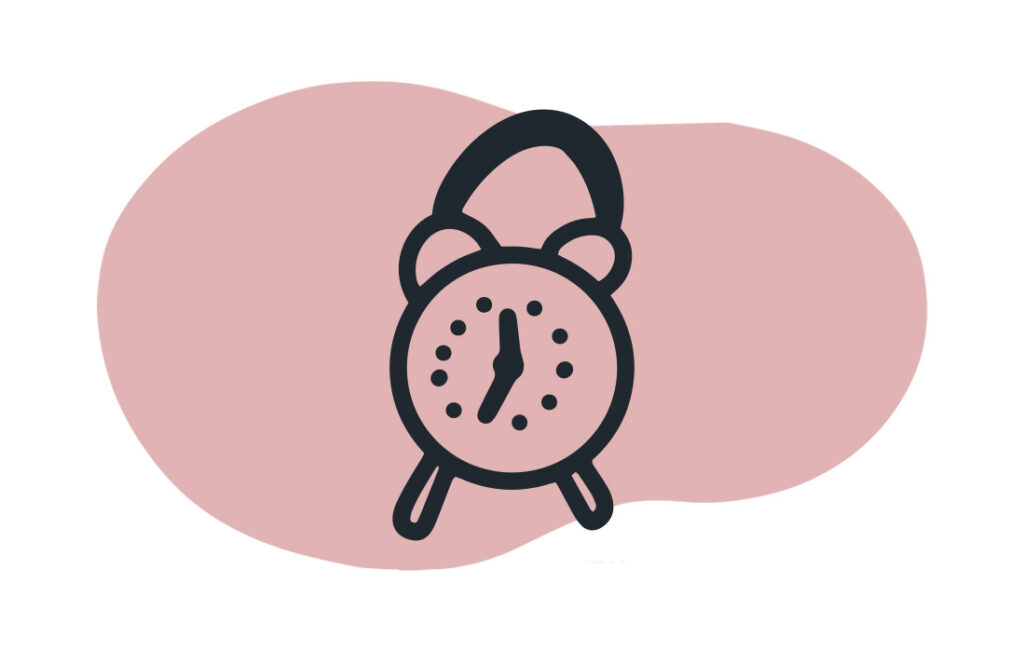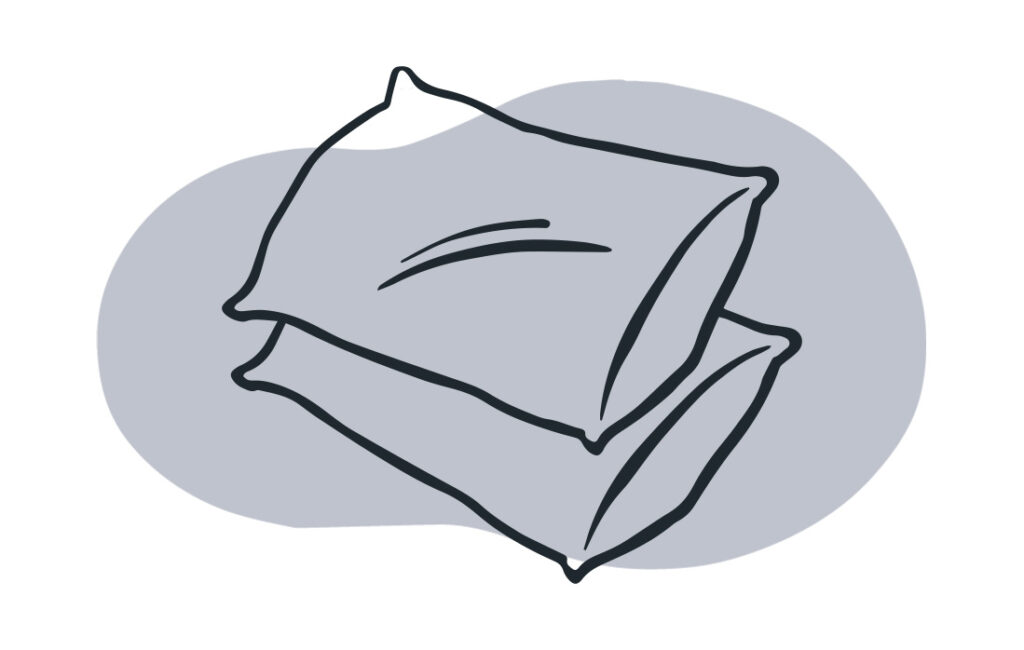Sleeping In The Military
Disclosure: By clicking on the product links in this article, Mattress Nerd may receive a commission fee at no cost to you, the reader. Read full disclosure statement.
A long, luxurious night of rest can be rare when you’re in the military. Over 60 percent of service members sleep only five or six hours per night. Considering most healthy adults are recommended to get at least seven hours of rest, many military personnel could be sleep deprived.
And yet, sleeping well is crucial to the peak performance necessary to carry out your duties and be on high alert. Sleep deprivation has been shown to have serious consequences, including impaired judgment, slowed reaction time, and difficulty concentrating. All of these can put you and your fellow service members in danger.
So how does the military get by on so little sleep? They waste no time tossing and turning. They’ve developed a system that helps soldiers fall asleep—and stay asleep—in as little as two minutes.
Military Sleep System
The 1981 book “Relax and Win: Championship Performance” by Lloyd Bud Winter claims that the military created a method during World War II to help soldiers fall asleep on the battlefield. No legitimate military source has backed up this claim, but many civilians have found success using the technique.
Before we dive into the method itself, let’s look at the complex relationship between sleep and the military—and all the challenges that come with trying to get some shut-eye while serving.

How the Military Approaches Sleep
From the moment you enter basic training, sleeping in becomes a thing of the past. 5:00 a.m. is your new start time, and that means you need to get skilled at falling asleep fast. There’s no winding down by scrolling on your phone or reading a book—it’s lights out as soon as you hit the pillow.
Wake-up times are strict. New recruits are often woken with loud banging to get up at the crack of dawn. But over time, all it may take is your commanding officer walking in and saying “get up” for you to be up and at ’em. And during deployment, sleep is even more elusive.
Luckily, daytime naps are encouraged. In 2020, the U.S. Army’s health and fitness manual officially endorsed that “leaders create time for soldiers to take short naps during long periods of continuous operations when troops are getting fewer than six hours of sleep a night.”
Sleep Challenges in the Military
You’re not just battling an anxious mind or drinking your last cup of coffee a little too late when you’re in the military—there are a number of other sleep issues at play. These may include:
- Circadian rhythm shifts: Sudden changes to your sleep patterns can shift the way your body releases melatonin (the hormone that makes you sleepy). This results in an increase in sleepiness, which can impact your ability to be vigilant.
- Poor sleep environment: From sleeping in a hot, stuffy tent to being subjected to extreme light intensity from your station, there are a number of environmental factors that can make it hard to fall asleep in the military.
- Overnight shifts: Working the night shift can cause fatigue, sleepiness, and lack of concentration, and even open you up to an increased risk of heart disease and cancer.
- Strict culture: There’s a lot of pressure to perform in the military. And while sleeping is essential for optimal performance, there’s a strict culture that often puts sleep on the back burner.
Military and Mental Health
Military Sleep Deprivation
Sleep deprivation is largely accepted as par for the course, especially when on duty. A 2021 report found that 86 percent of Army personnel deployed to Afghanistan slept less than seven hours per night, and 15 percent of the Air Force barely got four hours of sleep. Compared to the recommended seven to nine hours of sleep for adults, that’s a whole lot of lost sleep.
It takes a toll. Studies have shown that while soldiers can fight for extended periods on just brief, fragmented sleep sessions, eventually, it catches up in the form of sleep debt. The longer they go without a full night’s rest, the less productive they become—and the more prone they are to “abrupt and serious failures.”
Military PTSD
Sleep and military PTSD are inextricably linked. In fact, studies have shown that sleep disturbances are one of the most common symptoms, occurring in 74 percent of veterans with PTSD.
And it’s not surprising—a bad night’s sleep can trigger flashbacks and nightmares, which can make it hard to function during the day. Shell shock and combat stress are emotionally taxing enough to keep anyone up at night.
Insomnia in the Military
Unsurprisingly, insomnia is a common occurrence in the military—especially during deployment. One study found that combat exposure, mild traumatic brain injury (mTBI), irregular sleeping patterns, and even adjustment back to civilian life are all huge triggers of insomnia for soldiers. Developing insomnia can also increase the risk of PTSD, depression, and even suicide.

The Military Sleep Method
Needless to say, few are trying to recreate the military’s sleeping schedule. But learning how to use this unofficial technique to fall asleep in just two to three minutes—anytime, anywhere—can be a game-changer.
Here’s how it works:
- Relax your entire body starting with your face. Drop shoulders and release your hands. Exhale to relax your chest. Loosen your thighs and calves.
- Clear your mind for 10 seconds and imagine a relaxing scene.
- Repeat the phrase “don’t think” in your mind over and over again.
- Keep your breathing consistent.
There’s no scientific evidence that the military sleep method works, but many people have found that practicing it consistently every day does improve your ability to fall asleep faster.
FAQs
How long does it take to fall asleep using the military method?
It depends on the person, but it’s designed to help you fall asleep in two to three minutes.
What are some other sleep methods?
There are many different sleep methods to try. Some other popular ones include the 4-7-8 breathing method, progressive muscle relaxation, and meditation.
Does the military technique really work?
There’s no scientific evidence that it works, but many people have anecdotally found that it helps them fall asleep faster.
What is the 8-minute Navy SEAL nap?
The 8-minute Navy SEAL nap is a technique for napping without feeling groggy. It involves elevating your fear above your heart and setting an alarm for eight to 10 minutes.
Final Thoughts
Sleeping is an important part of maintaining good health and well-being. While some military personnel may have to power through functioning on fumes, getting back to a solid seven to nine hours per night is crucial for long-term health. If you’re having trouble falling asleep at night, trying out the military method could be a helpful way to drift off.
Sources
Belenky G, et al. (1994). The Effects of Sleep Deprivation on Performance During Continuous Combat Operations. https://www.ncbi.nlm.nih.gov/books/NBK209071/
Bramoweth A, et al. (2014). Deployment-Related Insomnia in Military Personnel and Veterans. https://www.ncbi.nlm.nih.gov/pmc/articles/PMC3832138/
Division of Sleep Medicine at Harvard Medical School. (2008) Get Sleep: Judgment and Safety. https://healthysleep.med.harvard.edu/need-sleep/whats-in-it-for-you/judgment-safety
Division of Sleep Medicine at Harvard Medical School. (2008) Get Sleep: Sleep and Mood. https://healthysleep.med.harvard.edu/need-sleep/whats-in-it-for-you/mood
Good C, et al. (2019). Sleep in the United States Military. https://www.nature.com/articles/s41386-019-0431-7
Herrera D. (2022). Tiktok-Viral Military Sleep Technique: Does It Really Work? https://www.ecosa.com.au/blog/post/tiktok-viral-military-sleep-technique-does-it-really-work.html
Hirshkowitz M, et al. (2015). The National Sleep Foundation’s sleep time duration recommendations: methodology and results summary [ABSTRACT]. https://pubmed.ncbi.nlm.nih.gov/29073412/
Military.com. (2020). Army Gives Its Official Support to the Time-Honored Practice of Field Napping. https://www.military.com/daily-news/2020/10/01/army-gives-its-official-support-time-honored-practice-of-field-napping.html
Military.com. (2011). Basic Training: Waking Up and Going to Sleep. https://www.military.com/join-armed-forces/basic-training-waking-up-and-going-to-sleep.html
Military Officers Association of America. (2021). Military Sleep Study Recommends New Policies for Better Troop Rest. https://www.moaa.org/content/publications-and-media/news-articles/2021-news-articles/military-sleep-study-recommends-new-policies-for-better-troop-rest/
Price M. (2011). The risk of night work. https://www.apa.org/monitor/2011/01/night-work
Saguin E, et al. (2021). Sleep and PTSD in the Military Forces: A Reciprocal Relationship and a Psychiatric Approach. https://www.ncbi.nlm.nih.gov/pmc/articles/PMC8533994/